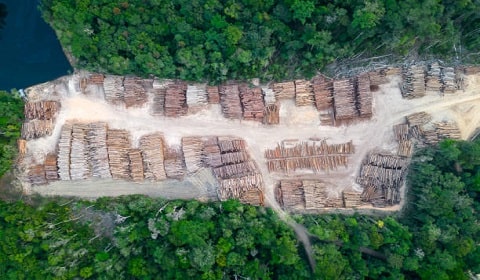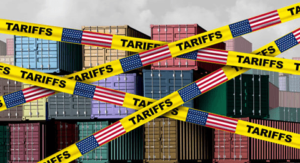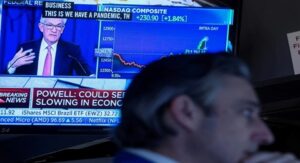
Unlocking Amazon Conservation Beyond Bioeconomy: A Critical Examination
Engaging in Amazon conservation beyond bioeconomy approach is imperative. While the bioeconomy model garners support from various stakeholders, its limitations and potential adverse effects on deforestation demand a reconsideration of our conservation strategies.
The bioeconomy’s narrow focus on niche markets like açai berries overlooks the broader socioeconomic and infrastructural challenges in the region. Instead, prioritizing the development of urban centers and non-forested areas offers a more sustainable solution.
Enhancing productivity and fostering urbanization we not only create stable jobs but also alleviate pressure on forested regions and ultimately safeguarding the Amazon’s invaluable biodiversity and ecological balance for generations to come.
Amazon Conservation Beyond Bioeconomy
The Amazon rainforest stands as a symbol of nature’s grandeur, vital for climate regulation and biodiversity conservation. However, the delicate balance of this ecosystem is threatened by deforestation and climate change. As the world grapples with how best to preserve this invaluable resource, the concept of a bioeconomy has gained traction.
Yet, a critical examination reveals that this approach might not be the panacea it’s touted to be. Here are seven key points to consider:
Table of Contents
1. The Importance of the Amazon
The Amazon rainforest, comprising a third of the world’s remaining tropical rainforests, is a biodiversity hotspot housing 10% of known wildlife species. With new species discovered almost daily, its vast richness remains largely undiscovered. Beyond its ecological significance, the Amazon acts as a global lifeline, storing 150-200 billion tons of carbon and releasing 20 billion tons of water daily, crucial for climate stability.
However, rampant deforestation, fires, and encroachment threaten its existence. Amazon conservation beyond bioeconomy, home to diverse indigenous communities and incomparable biodiversity, is paramount for humanity’s survival and the planet’s well-being. Collaboration is imperative to safeguard this irreplaceable treasure.
Read More: Green Hydrogen Development in Africa: Opportunities and Challenges
2. The Rise of the Bioeconomy
A growing consensus suggests that nurturing a “bioeconomy” offers the most effective safeguard for the Amazon. This approach has gained support from conservationists, Brazil’s government, philanthropies like the Moore Foundation, donors like the United States Agency for International Development, lenders such as the Inter-American Development Bank, and organizations like the World Economic Forum and the World Resources Institute.
Amazon conservation beyond bioeconomy also plays a crucial role in this endeavor. The bioeconomy framework prioritizes sustainable forest resource utilization and community well-being. This involves harvesting non-timber forest products like Brazil nuts and açai berries, alongside developing and marketing items like creams and perfumes under the Amazon 4.0 brand. Further exploration is anticipated to unveil additional valuable applications, empowering conservation efforts to counteract destructive practices like cattle ranching that fuel deforestation.
3. The Limitations of the Bioeconomy
While well-intended, this strategy is poised for adverse outcomes. The bioeconomy’s potential is overstated, with its true impact often misconstrued. Amazon conservation beyond bioeconomy is crucial to consider. Firstly, despite the popularity, açai berries and Brazil nuts only constitute niche markets, amounting to $1 billion, a mere 0.05% of Brazil’s GDP.
This insignificance cannot support the livelihoods of the Amazon’s 30 million residents. Secondly, even if demand for sustainable Amazon-sourced goods rises, local farmers face challenges against mass-producing competitors. Additionally, heightened demand may spur monoculture farms, exacerbating deforestation and biodiversity loss. Hence, while aiming for sustainability, this path may inadvertently exacerbate environmental degradation.
4. Infrastructure and Development Needs
Developing the Amazon’s bioeconomy necessitates substantial investment in infrastructure, skills, housing, social services, property rights, and financial resources, which are currently deficient in the region. However, their introduction could inadvertently spur deforestation by escalating land values.
World Bank research by Marek Hanusch reveals a notable link between deforestation and external shocks like exchange-rate fluctuations, impacting the profitability of agricultural ventures. Conversely, advancements in non-commodity sectors diminish the allure of land clearing, thus curbing deforestation. Moreover, fostering Amazon conservation beyond bioeconomy is essential for ensuring the long-term sustainability of the region’s ecosystem and biodiversity.
A 2023 study from Harvard’s Growth Lab on the Colombian Amazon underscores the role of road infrastructure in deforestation, with over 80% occurring within close proximity to tertiary roads. Local mayors often prioritize road construction to bolster their reelection prospects.
Furthermore, property rights play a crucial role, as evidenced by the lower deforestation rates in national parks and indigenous reserves compared to areas governed by the property-rights regime for “national wastelands.” Granting private ownership of occupied lands under this regime incentivizes land-grabbing and deforestation.
5. The Role of Urbanization
To safeguard the Amazon, prioritizing the development of urban hubs and surrounding non-forested areas offers a promising solution. By enhancing productivity in these regions, individuals are drawn away from forested areas towards urban comforts and job stability. This shift is observable in Brazil and Colombia, where rural populations have steadily decreased. With fewer people relying on forest resources, there’s more arable land per capita.
Combined with heightened productivity, this trend should uplift rural dwellers without encroaching on forests. Additionally, initiatives focusing on Amazon conservation beyond bioeconomy, such as sustainable land management practices and biodiversity protection efforts, play a crucial role in curbing deforestation rates. Despite these efforts, deforestation rates persist, indicating that factors beyond population pressure drive deforestation.
Read More: Ghana’s Role in Carbon Credit Innovation: Unlocking Sustainable Solutions
6. Urbanization and Economic Development
Urbanization and development intertwine, fostering specialization and knowledge exchange, enhancing collaboration among individuals with diverse expertise, thereby elevating productivity. Concentrated urban areas afford governments greater ease in providing infrastructure, public services, and security compared to dispersed rural regions.
The shift of agricultural value chains to cities is evident, housing major production, logistics, support services, processing, and distribution. However, deficient urban amenities, prevalent in many Amazonian towns, prompt some to forsake urban comforts.
In Colombia, rural dwellers often opt for proximity to local processing facilities and support services over city life, highlighting the allure of accessible amenities in rural settings. Furthermore, initiatives focused on Amazon conservation beyond bioeconomy are gaining traction, illustrating the multifaceted dynamics shaping rural and urban lifestyles in the region.
Read More: Empowering African Women
7. The Path Forward
In contrast, regions with high deforestation rates like Colombia’s Guaviare and Caquetá have predominantly urban populations. However, these cities require extensive primary and secondary road networks linking them to the rest of the country. Additionally, they need to implement expanded public housing initiatives, urban development programs, and competitive enhancement strategies.
Amazon conservation beyond bioeconomy is also vital in these areas. In thriving Amazonian cities like Manaus (Brazil) or Iquitos (Peru), urban dwellers have access to more appealing job prospects compared to farming. As a result, deforestation rates in these areas remain exceptionally low.
Bottom Line
While the bioeconomy model has garnered attention as a means to protect the Amazon, its limitations and potential unintended consequences warrant careful consideration. However, it’s imperative to recognize that Amazon conservation beyond bioeconomy initiatives is crucial for the long-term sustainability of the region.
Urbanization, on the other hand, offers a more holistic and sustainable approach to conservation by addressing economic, social, and environmental needs simultaneously. As we strive to safeguard the Amazon for future generations, prioritizing urban development emerges as a pragmatic and effective strategy.







